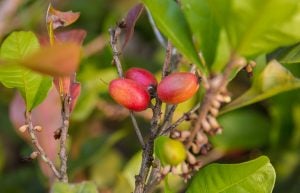On Christmas Eve, millions of kids will leave Santa Claus cookies and milk — presumably to butter him up for being naughty.
But from a nutritional perspective, maybe “butter” isn’t the right word. How about relentlessly sugaring him up with cookies?
Are well-intentioned kids contributing to Santa’s health delinquency? That’s tons of empty calories, devoid of any nutritive value. One can only imagine the disapproving looks of Mrs. Claus, Santa’s personal training elf, and Rudolph and company, who have to contend with his ever expanding waistline. The sleigh’s footprint can barely accommodate him, and that’s with a recent upgrade.
This was the year that Santa’s body buckled. The doctor, ignoring any hint of bedside manner, told him unequivocally to shape up — he’s been diagnosed with Type 2 diabetes, heart disease, and fatty liver disease. Cap that off with a BMI suggesting morbid obesity.

Turns out, jokes about jolly old St. Nick getting lodged in the chimney aren’t so far from reality. Society has a certified love affair with sugar — the contributing cog in an ever-escalating obesity crisis. With its de facto placement on the food pyramid (by convenience), the excess consumption of sugar has been called the “devil in the cupboard” by critics. According to current predictions, nearly 50 percent of the American population will be clinically obese by 2030 — at a cost (and toll) of an additional $66 billion on the healthcare system. Insert your new lyrics to the Twelve Days of Christmas here.
But moderation and personal responsibility you say! I’m no advocate of helicopter nannyism, but avoidance is easier said than done. Sugar is a ubiquitous and sly additive. It’s like every food product is liberally amended — just because. And what does the industry do in response to earnest requests to shave content? They develop low-sugar alternative brands and charge a premium! Insulin resistance be damned.
It’s no secret that sugar triggers a certain feeling of euphoria and satisfaction. One can only imagine how our ancestors — in their walkabout, pre-civilization days — reacted to honey. It was a rare, prized treat. But now, it’s morphed from occasional indulgence to routine excess; to the point of being caught in an escalating physiological/psychological wargame just to get a “buzz.” Our primal affinity for sweetness will be our health undoing, unless we shape up.
To be fair, there’s been plenty of work developing and releasing non-caloric sweeteners (saccharin, Stevia, aspartame, xylitol, and the like). But these can colossally backfire, especially with diet sodas. The body, tricked into expecting actual sugar for “fuel,” feels jilted — triggering hunger centers — tempting you to simply eat food to make up the perceived deficit!
The new dietary argument is that we should work with our temptations, rather than actively fight (and succumb to) cravings. What if a little taste bud sleight of hand could ease your guilt? With a public weary of false sweeteners, a new(ish) kid on the block may actually follow through — Miraculin.
Miraculin is a protein found in the Miracle Fruit. This tropical species has a curious attribute — it can (temporarily) invert intense sour to delectable sweet. And it’s calorie free.

I was first introduced to the Miracle Fruit at ECHO, a faith-based agricultural organization in Fort Myers, Florida, about 10 years ago. The guide explained that the fruit was initially used to make otherwise (unpalatable) “medicine go down.” After being given a small, oblong red fruit and suckling for a bit, I was handed a lime. The formerly pucker-inducing sour was transformed to downright irresistible. Not only was I extracting the juice of the lime, but I was literally biting chunks with abandon.
So how does it work its “miracle”? Evidently, the Miraculin protein hijacks natural sweet tastebud receptors and causes them to fire in response to acids instead of sugar. Basically, it drowns out the ability to perceive sour or bitter. Luckily for us, the perception defaults to sweet.
While “administering” Miraculin is pretty straightforward, there’s been one major hurdle to adoption — cost. Its price point has been on par with truffles, relegating it to nothing more than a high end, gimmicky curiosity.
Some enterprising individuals have proposed cultivation systems to hasten adoption. One method uses bioengineered lettuce and tomato plants as biological factories to produce the protein. Basically, give lettuce and tomatoes the ability to produce Miraculin natively with a “GMO” inspired cut and paste job. Easily harvested bulk production. Others have investigated growing Miracle Fruit in a controlled environment (greenhouse system) where conditions can be optimized for maximum yield.
Some promising movement on a bona fide sugar alternative. Will industry get on board? How will entrenched sugar interests respond? Stay tuned.
Whatever pans out, it sounds like future Christmases may be primed for a little tastebud trickery. Call it the sweet science of taste misdirection. Miraculin is the new hot edible, a Rx for sugar envy. Guilt-free(er) indulgences, not only for the festive season of sweets, but year round? Sign me up.
Tim Durham’s family operates Deer Run Farm — a truck (vegetable) farm on Long Island, New York. As an agvocate, he counters heated rhetoric with sensible facts. Tim has a degree in plant medicine and is an Assistant Professor at Ferrum College in Virginia.



